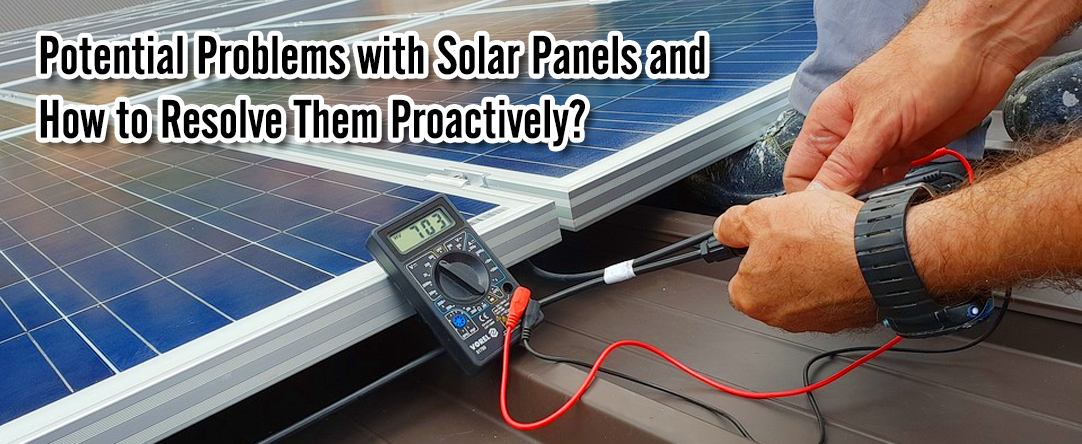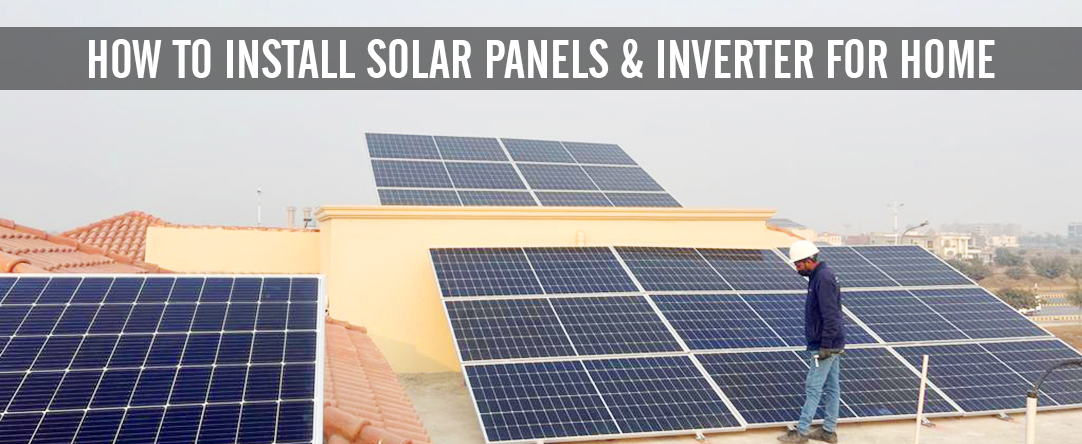
Potential Problems with Solar Panels and How to Resolve Them Proactively?
June 12, 2023
Overcoming Net Metering Challenges: Solutions for a Smoother Transition
June 17, 2023Harnessing solar energy for your home is a worthwhile initiative, offering both environmental and economic benefits. This guide breaks down the process of installing solar panels and inverters, from understanding the critical components of a solar power system to detailed installation steps and maintenance tips.
Understanding Solar Energy
Basics of Solar Energy
Solar energy is energy from the sun that is converted into thermal or electrical energy. It is the most abundant, renewable energy source on Earth. Solar energy is harnessed using solar panels, which convert sunlight into electricity.
Benefits of Solar Energy
Solar energy is not only sustainable but everywhere and easy to harness. Using solar panels reduces electricity bills, has diverse applications, and is environmentally beneficial. Moreover, solar power systems can operate independently, making them a good electricity source in remote areas.
Components of a Solar Power System
A solar power system is designed to harness sunlight, convert it into usable energy, and distribute it for various applications. The major components that make this possible are solar panels, solar inverter, battery storage system, and solar charge controller.
Solar Panels
Solar panels, often called photovoltaic (PV) panels, are a solar power system’s most visible and integral component. The role of solar panels is to capture sunlight and convert it into electricity. They are composed of tiny solar cells made of semiconductor materials like silicon. When sunlight strikes these cells, it excites the electrons, generating a current flow.
Solar panels vary in their capacity, which is measured in watts. They also vary in types, including monocrystalline, polycrystalline, and thin-film panels, each having different efficiency levels and costs. The choice of solar panels depends on factors such as the availability of space, budget, and the desired output of the system.
Solar Inverter
A solar inverter is a component that transforms the direct current (DC) produced by solar panels into alternating current (AC) that home appliances can use. It is the gateway between the photovoltaic system and the energy off-taker. There are different types of solar inverters, like string inverters, micro inverters, and power optimizers, and the choice depends on the specific needs of the solar power system.
Solar inverters also have an essential role in system monitoring and performance optimization. Modern inverters have intelligent features that provide data on the power system’s health and output, allowing for proactive maintenance and better energy production.
Battery Storage System
While solar panels and the inverter form the backbone of the solar power system, the battery storage system ensures the continuity of the power supply. Solar panels produce electricity only during the day, and to use this power after sundown, it needs to be stored. This is where batteries come in.
These batteries store excess electricity produced during the day, which can then be used at night or on cloudy days when the panels aren’t producing enough electricity. The capacity of a battery storage system should align with the home’s energy needs and the solar panels’ power production capacity.
Solar Charge Controller
The solar charge controller, also known as a charge regulator, is a small but crucial component of the solar power system. Its primary function is to manage the power going into the battery bank from the solar array. It ensures that the batteries do not overcharge during the day and that power does not go back into the panels at night when not producing electricity.
The charge controller also protects against battery overvoltage, which can cause overheating and damage. Additionally, it helps to extend the battery’s life by preventing over-discharge.
Furthermore, the components of a solar power system work in synergy to harness, convert, store, and regulate solar power for home use. Each of these components plays a critical role in the functionality and efficiency of the system, from the capturing of solar energy by the panels, the conversion of it into usable electricity by the inverter, to the storage of excess power by the batteries, and the regulation of power by the charge controller. Understanding these components and their functions is essential for anyone considering a solar power system installation.
The Installation Process
Choosing the Right Location
For maximum efficiency, solar panels should be installed where they can get the most sunlight throughout the day. Typically, this means facing them toward the equator.
Mounting the Solar Panels
After you’ve found the perfect location, it’s time to mount the solar panels. This step involves securing the panels to the roof or ground mount.
Installing the Solar Inverter
The solar inverter is typically installed near the main panel, and it should be in a location that’s easily accessible. It’s essential to follow the manufacturer’s instructions during installation.
Setting Up the Battery Storage System
The batteries should be installed in a ventilated area to prevent overheating. The battery bank is typically connected to the solar inverter.
Connecting the Solar Charge Controller
Finally, the solar charge controller is connected to the battery and solar panels to regulate the power moving through the system.
Maintaining Your Solar Power System
Regular Inspection
A periodic inspection is necessary to ensure your solar power system functions appropriately. Regular checks can detect any possible issues early on.
Cleaning the Solar Panels
Solar panels should be cleaned periodically to remove any dirt or debris that may have accumulated and is affecting their performance.
Professional Maintenance
While homeowners can do regular inspections and cleaning, it’s essential to have professional maintenance done periodically. These professionals can perform a more thorough check and resolve any technical issues.
Wrapping it up
Installing solar panels and an inverter for your home is a step-by-step process that involves understanding solar energy, knowing the components of a solar power system, and installing and maintaining the system. While it can seem daunting, with the proper knowledge and tools, you can effectively install and maintain a solar power system in your home.




